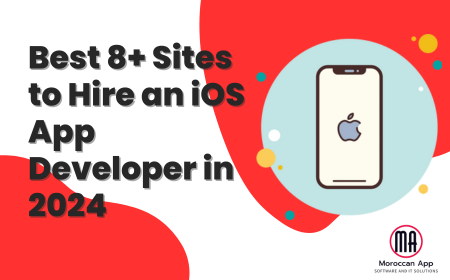- Mon - Sat 8:00 - 17:30, Sunday - CLOSED

Alkhadim RFID – The complete inventory management and tracking solution based on RFID technology
Discover Alkhadim RFID, an innovative solution designed to transform inventory management, asset tracking, and logistics within businesses. Powered by RFID (Radio Frequency Identification) technology, Alkhadim RFID provides real-time traceability, enhanced accuracy, and automated stock management processes, making it ideal for sectors like retail, warehousing, logistics, and document management. Key Features: Real-time tracking of stock and assets Automated inventory and stock updates Enhanced data accuracy, reducing human errors Efficient access and security management with custom RFID badges Detailed reports and analytics for informed decision-making Why Choose Alkhadim RFID? Our Alkhadim RFID solution enhances operational efficiency by reducing stock loss and increasing productivity. With a user-friendly interface and broad compatibility with various RFID equipment, Alkhadim RFID meets the needs of modern businesses in asset and inventory management. Use Cases: Retail: Track products on shelves, rapid inventory, and control of entries and exits Logistics: Track parcels and pallets in warehouses Archives and Libraries: Document management, tracking loans and returns Industry: Track equipment and tools Contact us for a demonstration or more information. To learn more about Alkhadim RFID, get in touch with our team and discover how our solution can optimize your asset management processes. Tags: #AlkhadimRFID #InventoryManagement #RFID #Logistics #StockTracking #Traceability #Automation #RFIDTechnology

Discover ALKHADIM Consumption by C2M at GITEX 2024: Revolutionizing Energy Efficiency
🌟 Exciting Announcement at the Gitex Show! 🌟 We are delighted to announce that C2M, a leader in the field of technologies, is today unveiling a revolutionary innovation at Gitex: ALKHADIM Consumption! 🔧 ALKHADIM Consumption is specially designed to reduce electricity consumption by up to 30%, thus offering sustainable and economically advantageous solutions for businesses and individuals. 🎯 Key Objectives: Reducing Electricity Consumption: Minimize electricity use while maximizing efficiency.Sustainability: Adopt environmentally friendly practices without compromising performance.Savings: Reduce your energy costs through optimized use of resources.We are incredibly proud of the hard work and commitment of our team to make this vision possible. Come discover ALKHADIM Consumption and explore how this innovation can transform your approach to energy management! 📍 Come meet us at Gitex for a live demonstration and to learn more about our innovative technological solutions. ➡️ For more information, visit our website https://www.c2m.ma/ https://moroccanapp.com/ or contact us directly. #SustainableTechnology #Innovation #Gitex2024 #ConsumptionReduction #C2M #ALKHADIM

Morocco Showcases Innovative Tech at GITEX AFRICA 2024: Join Us!
🌟 We are very happy and honored to have been selected to represent our country, Morocco! 🇲🇦 This is an incredible opportunity and we can’t wait to share this adventure with you all. Thank you all for your support ! #apebi Abdellatif Miraoui APEBI Federation of telecommunications information technologies and offshoring. Innovations Made in Morocco 🇲🇦 Come and discover 6 technological innovations Made In Morocco with the support of the Ministry of Digital Transition and Administrative Reform at the APEBI Federation of Telecommunications Information Technologies and Offshoring pavilion. with breathtaking demos and objects with high development potential during the second edition of GITEX AFRICA in Marrakech, from May 29 to 31, 2004 🌍 The selection jury composed of representatives of the Ministry of Digital Transition and Administrative Reform, the Ministry of Industry and Commerce – Morocco, the Digital Development Agency-ADD and the Moroccan Agency of Investment and Export Development – AMDIE, was proud to see the enthusiasm generated by the call for expressions of interest, launched at the beginning of May 🤝 From more than 60 applications received in record time, the jury’s choice fell on the innovations that best met the following criteria: ▪️Compliance with the latest innovation trends; ▪️Design and manufacturing quality; ▪️ Potential impact on the Tech industry; ▪️ Level of innovation and originality; ▪️Unique representation of an industry or technology. As the exhibition space is quite limited to accommodate more innovations, the Federation and its partners will increase their efforts to devote more space to future editions 🎪 These innovations will rub shoulders with other products, technological and digital solutions which will be exhibited by the members of the Federation 🤖 hashtag#IoT hashtag#smartcity hashtag#AugmentedReality hashtag#3Dprinting hashtag#drone hashtag#greentech hashtag#agritech hashtag#APEBI hashtag#GITEXAfrica hashtag#Marrakech hashtag#Morocco hashtag#Morocco hashtag#Africa hashtag#Africa

Exclusive invitation to GITEX AFRICA 2024 – C2M
🌟 It is with enthusiasm that we welcome C2M among the exhibitors of the APEBI Federation of Telecommunications Information Technologies and Offshoring. at GITEX AFRICA this year! 🚀 Explore their range of software solutions and discover how they are pushing the boundaries of IT development. Join them onsite for exclusive demos and insightful conversations about the evolution of software development. 🌐 www.c2m.ma hashtag#APEBI hashtag#GITEXAfrica hashtag#Marrakech hashtag#Morocco hashtag#Morocco hashtag#Africa hashtag#Africa Ministry of Digital Transition and Administration Reform Digital Development Agency-ADD

Exclusive invitation to GITEX AFRICA 2024 – C2M
Exclusive invitation to GITEX AFRICA 2024 – C2M As a preferred customer of C2M, we are delighted to invite you to discover the latest technological innovations at GITEX AFRICA 2024, one of the largest technology fairs in the world, which will be held from May 29 to 31 in Marrakech. This exclusive invitation will allow you to live an immersive experience at the heart of new technological trends and to discover our solutions. Meet our team of passionate experts ready to discuss your needs and challenges. Explore emerging trends and strategic partnership opportunities. Your presence at this prestigious event will demonstrate your commitment to innovation and excellence, and we are confident that you will benefit greatly from it. To confirm your presence and receive your promo code, please respond to this email Last name First Name Tel and Email Before May 11, 2024 Sincerely www.c2m.ma www.moroccanapp.com

Best 8+ Sites to Hire an iOS App Developer in 2024
In 2024, the demand for skilled iOS app developers skyrocketed, underscoring the crucial need for proficient professionals to drive seamless app development across Apple’s diverse platforms. Navigating the intricacies of iOS and its myriad devices emphasizes the necessity of hiring developers with in-depth knowledge of the ecosystem. Crafting successful apps poses significant challenges, making the decision to engage an iOS app developer a pivotal one. Enter MoroccanApp, a leading expert in software outsourcing, offering invaluable support to startups and businesses alike. Their prowess lies in handpicking highly skilled iOS app developers who possess a deep understanding of iOS intricacies and demonstrate mastery over essential tools and programming languages. MoroccanApp’s developers ensure that apps they create seamlessly integrate with the interface expectations of various Apple devices. This blog dives into the dynamic realm of iOS app development, shedding light on the critical attributes to consider when hiring an iOS app developer. We also provide insightful interview questions to empower you to make informed decisions. Additionally, we offer an exclusive preview of the nine most outstanding platforms for hiring iOS app developers in 2024. Stay tuned for an illuminating journey through this ever-evolving landscape. Let’s embark on this journey together! 1. MoroccanApp -Top Pick MoroccanApp takes the spotlight as the premier platform for hiring top-notch iOS app developers. With its streamlined approach, MoroccanApp seamlessly connects you with seasoned Apple developers who excel in crafting captivating apps. Their platform boasts a vast pool of proficient developers, poised to breathe life into your app vision. Pioneering a steadfast commitment to quality and efficiency, this platform guarantees finding the perfect Apple developer for your needs. Whether you’re in search of an expert iOS app developer or seeking a tailored solution, MoroccanApp’s expansive network ensures a seamless match. Key Features: Full-Managed Outsourcing: MoroccanApp’s team of skilled iOS app developers takes charge of every project aspect, from conceptualization to deployment. Their hands-on approach streamlines the development process, allowing you to focus on your core business while we handle the technicalities. Collaborative Process: MoroccanApp fosters close communication between our iOS app developers and clients, ensuring seamless integration of your vision into the app’s design, features, and functionality. Diverse Pool of Talent: MoroccanApp’s iOS app developers bring a wealth of diverse skills and experiences to the table. This diversity fuels innovation, ensuring your app benefits from a well-rounded perspective and resonates with a broad audience. Swift Mastery: Developers at MoroccanApp boast a strong command of the Swift programming language, a cornerstone for efficient and elegant code. End-to-End Service: Beyond coding, MoroccanApp offers comprehensive assistance, including app analytics, beta software testing, and integration of accessibility features. MoroccanApp’s Pricing Plan: MoroccanApp’s pricing structure caters to businesses of all sizes. Their commitment to transparency ensures you get precisely what you pay for, with costs aligning with the scope and complexity of your project. Reach out to our Account Executives at contact@moroccanapp.com to embark on your transformative app development expedition! Hire your team 2. Appetiser Appetiser sets the gold standard by handpicking only the top 1% of developers, ensuring unparalleled expertise onboard. Leveraging SWIFT, Apple’s native programming language, they deliver iOS apps that are not just faster and more secure but also highly customizable, aspiring to rival industry titans like Uber, Spotify, and Instagram. At the core of their philosophy lies open communication. Appetiser prioritizes time-to-market value, employing a groundbreaking ‘baseplate’ framework that slashes iOS development time by half, all while maintaining impeccable quality. Key Features: Quality Assurance: With a stringent selection process for developers and harnessing Apple’s SWIFT language, Appetiser guarantees a top-tier app that excels in speed, security, and cost-effectiveness. Rapid Launch: Their innovative ‘baseplate’ framework ensures a remarkable 50% reduction in iOS development time, enabling clients to swiftly launch their apps and gain a competitive edge. Data-Driven Design: Appetiser crafts apps that not only function seamlessly but also captivate users amidst the crowded App Store, leveraging data-driven design principles. Pricing Plan: With a steadfast commitment to efficiency and quality, Appetiser offers a bespoke pricing plan tailored to match the unique needs and aspirations of your iOS app project. 3. Cleveroad Cleveroad excels in crafting and delivering iOS apps, leveraging native programming languages like Swift and Objective-C to ensure optimal performance and a delightful user experience. With a sharp focus on staying abreast of the latest technologies and industry trends, they guarantee 100% client satisfaction across all Apple devices. Drawing from over a decade of extensive expertise, Cleveroad’s proficiency spans diverse sectors including healthcare, telemedicine, supply chain, finance, and more. Key Features: Native Swift Apps: Cleveroad’s iOS app developers harness the power of Swift to create robust and swift applications, enhancing user experience and offering an ideal solution for iOS app development needs. Innovative Technologies: Cleveroad integrates cutting-edge technologies like Big Data, Media Expertise, and IoT to deliver superior iOS app functionalities, ensuring adaptability to the ever-evolving market landscape. Expertise in Various Industries: With a decade of experience, Cleveroad’s iOS app developers excel in crafting intricate web platforms and mobile applications tailored to diverse industries, ranging from HealthTech to Education, always aligned with the latest industry trends. Pricing Plan: Cleveroad prioritizes transparency in pricing, enabling potential clients to interactively calculate the cost of their software project through their user-friendly online platform. 4. DOIT Software DOIT Software stands out as the ultimate solution for businesses aiming to streamline processes, deeply engage customers, and boost profit margins. Their adept team possesses a comprehensive understanding of mobile app development, offering full-cycle services ranging from meticulous business analysis and UI/UX design to seamless product deployment and ongoing support. By entrusting DOIT Software with your app’s development, you can rest assured that your focus remains on scaling your business operations while they handle the technical intricacies. Key Features: Native App Development: DOIT Software delivers stable, high-performance apps that are not only flexible and scalable but also developed using native tools, ensuring fewer architectural restrictions and enhanced functionality. Cross-platform App Development: With DOIT Software, you enjoy faster time-to-market and cost-effective development solutions. Leveraging reusable code and simultaneous

Best 7+ Sites To Hire Android App Developers: A+ List 2024
Navigating the vast landscape of Android app development partners can be daunting, but with the right guidance, you can streamline the process and align with experts who elevate your project to success. In the ever-evolving realm of software development, 2024 heralds a myriad of platforms offering cutting-edge solutions tailored to diverse project needs. MoroccanApp, as a frontrunner in software development outsourcing, continuously expands its global network of adept app developers. MoroccanApp ensures a diverse pool of expertise to cater to varied project demands. Drawing from our extensive collaborations with these professionals, we’ve curated a selection of top-tier sites that exemplify excellence in Android app development. Our meticulously crafted A+ list not only highlights premier companies and agencies but also delves into what distinguishes them and which businesses stand to gain the most from their collaborative endeavors. By journey’s end, you’ll possess a comprehensive roster of potential partners for your Android app development endeavors. Armed with this knowledge, you’ll be empowered to discern the ideal team for your project and discern the crucial criteria when selecting and engaging professionals. Let’s embark on this transformative journey together! 1. MoroccanApp -Top Pick MoroccanApp revolutionizes the Android app developer hiring process through a stringent vetting system, ensuring a seamless match with the perfect team for your project, all while optimizing efficiency and cost-effectiveness. With our expansive partner network spanning various industries, connecting with top-tier Android developers tailored to your field is effortless. In our commitment to empowering clients, our Account Executives collaborate closely with you to craft a bespoke mobile app development blueprint aligned with your specifications. Moreover, our comprehensive project management guarantees the flawless execution of your Android app development venture, be it a simplistic application or a multifaceted enterprise-level solution. Key Highlights of MoroccanApp: App Development Consultations: Simplifying the daunting task of hiring Android app developers, our streamlined process saves you time and resources, ensuring efficiency and cost-effectiveness. Remote Android Developers: Tap into our network of skilled developers specializing in Android development for outsourced projects. Industry-Specific Proficiency: Our partner network boasts Android app developers versed in various sectors. End-to-End Project Supervision: From conception to launch, our dedicated project managers ensure adherence to timelines and specifications. Flexible Engagement Models: Recognizing the diversity of business needs, we offer adaptable engagement models to maximize efficiency and cost-effectiveness. MoroccanApp Pricing Plans: Tailoring each plan to suit individual client requirements, our transparent pricing options reflect the value and expertise of our developers, providing competitive rates without compromising quality. Our adept project managers navigate every phase of the Android app development journey, ensuring adherence to your vision and objectives. Reach out to our Account Executives at contact@moroccanapp.com to embark on your transformative app development expedition! Hire your team 2. OneClick IT Consultancy – Software Development and Consultation OneClick IT Consultancy stands out with its comprehensive software development services, complemented by dedicated consultation and management personnel, guiding you through every phase of your project. Collaborating with their team not only ensures the meticulous planning of your Android application but also opens avenues for discussions on scalability and industry growth potential. Specializing in specific industry niches and trends, OneClick IT Consultancy devises tailored strategies to actualize your ideal Android application, providing a dependable long-term solution. With features like an Agile hiring method and resource control, businesses retain autonomy over their system’s growth trajectory. Key Highlights of OneClick IT Consultancy: Expert Consultation Services: Leverage the expertise of a seasoned team to craft an Android application aligned with your company’s objectives. Flexible Hiring Modules: Exercise control over software developer selection and resource allocation, optimizing spending per module. Consumer-Centric Approach: Prioritize scalability and user attraction with a consumer-centric strategy tailored to your Android application. OneClick IT Consultancy Pricing Plans: While direct pricing details aren’t available on their website, interested parties can engage with their representatives to discuss tailored budgetary estimates based on specific project needs. OneClick IT Consultancy transforms your app concept into reality, catering to diverse business types and industries. Their Android application developers streamline the process, ensuring superior outcomes that align with your objectives and requirements. 3. Biztech – Development Stability Biztech epitomizes the fusion of business objectives with robust technology, delivering steadfast Android applications with a remarkable 99% crash-free assurance. Backed by their software prowess, clients entrust Biztech to provide a reliable and consistent system tailored to their business imperatives. Material design compliance further underscores their commitment to fulfilling client specifications. Renowned for top-tier support and flawless solutions, Biztech empowers companies to concentrate on expanding and diversifying their operations. Their global presence ensures accessibility to Android developers across different time zones and locations, bolstering client confidence in round-the-clock support. Key Highlights of Biztech: Bug-Free Solutions: Rely on Biztech’s 99% crash-free guarantee for a resilient Android application with minimal risk of critical errors. 160 Hours of Work: Long-term projects benefit from a minimum commitment of 160 hours per month per work cycle, ensuring consistent progress. API Integration: Seamlessly integrate your Android application with third-party systems for enhanced efficiency through custom API integration. Biztech Pricing Plans: Tailored to your specific requirements, Biztech offers flexible pricing plans and timelines. Connect with their representatives via their website for personalized insights into expected costs. Biztech emerges as an exceptional choice for businesses with distinct app development needs. Their unwavering customer support and sterling track record position them as a dependable partner for companies seeking Android app developers. With projects compliant with material design standards, clients can rest assured their apps are crafted precisely to their specifications. 4. Technource – Value on Resource Models Technource prioritizes value-driven solutions, recognizing the significance of obtaining optimal returns for clients. Their commitment to securing the right price-value ratio is exemplified through the deployment of diverse resource models, enabling startups and enterprises alike to tailor services to their Android app development essentials. Proficiency in Android Studio is a hallmark of every Technource developer, supplemented by varying expertise in programming languages like JavaScript, Python, and Objective C. Additionally, companies seeking to expand their digital footprint can leverage Technource’s progressive web development

best 9+ Laravel Development Companies & Services For 2024
Navigating the digital realm, where websites and web applications reign supreme, is where Laravel shines. While mastering this language may not be daunting, the pivotal choice lies in selecting the right Laravel development company to realize your vision. Thankfully, amidst the sea of options, standout Laravel development companies emerge, ready to alleviate your decision-making burden and kickstart your project on what many consider the pinnacle of PHP frameworks. For newcomers overwhelmed by the plethora of choices online, we’ve streamlined the process for you. We’ve meticulously curated a roster of top-tier Laravel development firms, prioritizing value, excellence, and dependability. By journey’s end, you’ll possess a comprehensive understanding of the premier options available, empowering you to confidently engage the perfect company to fulfill your Laravel development aspirations in 2024. 1. MoroccanApp -Top Pick Leveraging Laravel for unparalleled user experiences, MoroccanApp stands as a global frontrunner in empowering businesses to bolster their Laravel development teams. Whether you’re assembling a cadre of developers or crafting a bespoke product, MoroccanApp ensures access to top-tier development talent from across the globe. At MoroccanApp, punctuality, fiscal responsibility, and uncompromising quality define your software journey. Key Features Expansive Partner Network: With a meticulous selection process, MoroccanApp has curated a network of over 10,000 software agencies worldwide, guaranteeing access to the pinnacle of Laravel development expertise. Rigorous Evaluation Standards: Each Laravel development company undergoes comprehensive scrutiny to meet MoroccanApp‘s exacting benchmarks for quality and proficiency. Transparent Progress Reports: Clients receive regular updates on project advancement, fostering informed decision-making and unwavering confidence at every juncture. Dedicated Support Infrastructure: MoroccanApp provides unwavering assistance throughout the software lifecycle, from initial consultations to project culmination, ensuring clients feel supported every step of the way. Have a defined scope of work? Let’s collaborate on a precise estimation. Reach out to schedule a consultation or contact contact@moroccanapp.com for further details. Hire your team 2. InnoSource Technology – Scalable Development Process InnoSource, with offices in the UK and Albania, emerges as a premier destination for Laravel development solutions. Bolstered by a seasoned team of Laravel developers, the company adeptly manages all facets of web and mobile app development, excelling particularly in furnishing optimal backend solutions for intricate Laravel eCommerce platforms. Transitioning seamlessly to Laravel is facilitated by InnoSource’s proficient teams, ensuring a prompt and substantial switch. With a client-centric approach, availing their application development services is a hassle-free endeavor. InnoSource offers dedicated Laravel developers to cater to both frontend and backend development requisites, crafting robust and feature-rich web applications that deliver exceptional performance. Renowned for their flexibility, InnoSource’s Laravel development team goes the extra mile to ensure a seamless development journey for clients. Additionally, the company provides scalability tailored to your business demands, furnishing expert Laravel developers who work remotely, thereby augmenting your economic infrastructure. Engaging InnoSource for Laravel projects is characterized by a frictionless process: Business requirements and developmental scope are meticulously analyzed. Skilled Laravel developers, tailored to your project needs, are deployed. InnoSource remains available for consultation throughout the project lifecycle, ensuring client satisfaction from inception to completion. Highlighted services that distinguish InnoSource include: Tailored plans to suit diverse needs Cost-effective solutions catering to startups and SMEs Full ownership rights of the code, sans hidden clauses AI and ML-driven Laravel solutions Pricing: Customized pricing for Laravel development is available upon project evaluation, tailored to suit your unique requirements. Reach out to InnoSource to discuss your project needs and obtain a personalized quote. 3. KDG – Professional Development Solutions KDG (Kyle David Group) emerges as a formidable player in the software development arena, boasting specialized expertise in Laravel products and a seasoned team steering its projects. With a distinct focus on serving non-profits, educational institutions, and small to mid-market businesses, KDG stands out as the prime candidate for fulfilling unique developmental requirements. Their adeptness in managing projects of varying scales and complexities solidifies their position as a reliable partner in the software development landscape. Established in 2001 and headquartered in the USA, KDG houses some of the industry’s most skilled developers and designers, dedicated to translating clients’ software concepts into reality. Their service spectrum encompasses: Design CRM consulting Mobile app development Sales intelligence services Custom software development Moreover, KDG places a strong emphasis on cultivating robust customer-company relationships, fostering clear communication channels to ensure a thorough comprehension of each project’s intricacies and requirements. Highlighted Laravel development services that distinguish KDG and contribute to their recognition in our top three list include: Affordable cost-effective solutions tailored to meet diverse business demands Tailored solutions ensuring the security of clients’ intellectual assets Cutting-edge Laravel technology offerings tailored for startups and niche projects Pricing: KDG offers customized plans tailored to each client’s specific needs, with pricing determined accordingly. For detailed pricing information, clients can reach out to KDG for a personalized quote based on their requirements. 4. Fingent – Trusted By Big Brands Fingent stands as a premier Laravel development company on a global scale, with headquarters in India and additional offices in the UAE, USA, and Australia. Distinguished by its ISO 27001:2013 certification, Fingent excels in web and mobile custom software development, SaaS solutions, and enterprise software development. Leveraging the robust Laravel framework, Fingent offers tailored solutions and draws upon the expertise of over 300 professionals to ensure each project is executed with personalized precision. With a rich legacy spanning 17+ years, Fingent prides itself on its adept team capable of catering to the diverse needs of industries, from startups to Fortune 500 enterprises. As a SAP Silver Partner, Fingent not only delivers SAP solutions but also provides comprehensive consulting services. Key services offered by Fingent include: Personalized consultation throughout the project lifecycle In-house automated QA testers for seamless debugging Comprehensive Laravel development solutions Expertise in Laravel-based AI, data science, and IoT projects Pricing: Fingent offers bespoke pricing tailored to the unique specifications of each project. Clients can request Laravel website development quotes to obtain detailed cost estimates based on their requirements. 5. CuttleSoft – Robust Laravel Solutions Cuttlesoft distinguishes itself with a core ethos centered on the

9 Freelance Platforms for Hiring Python Developers 2024
Python stands out as a dominant force among programming languages, commanding a significant presence in the tech landscape. With its popularity soaring, the demand for skilled Python developers is on the rise. Yet, in a competitive job market where top talent is quickly snatched up, finding the perfect Python developer for your team can prove to be quite the challenge. Complicating matters further, the field is teeming with freelance platforms offering Python development services, making it essential to navigate your search with precision. With so many options available, knowing where to begin your quest can feel overwhelming. But fret not! Whether you’re a burgeoning startup or a seasoned enterprise, our comprehensive guide is here to equip you with the insights necessary to discover the ideal Python developer for your project. Within these pages, we explore nine top freelance platforms for sourcing Python talent, illuminating their unique features and shedding light on associated costs. By the time you finish reading, you’ll possess a roadmap to the most promising talent pools and strategies to streamline your hiring process. Let’s embark on this enlightening journey together and pave the way for seamless recruitment in 2024! 1. MoroccanApp -Top Pick At MoroccanApp, we redefine the software development journey, serving as your ultimate destination for all things tech. We’re not just another ordinary agency offering Python-based solutions; we’re dedicated to creating products that not only meet but exceed your expectations, enhancing your bottom line in the process. Our development approach is far from random; it’s grounded in logic and intent. This originates from our teams of seasoned Python professionals, equipped with the expertise to consistently surpass your loftiest aspirations. At MoroccanApp, excellence is a must, going beyond traditional qualifications. We prioritize skills and practical experience, carefully selecting each member of our Python developer team. Furthermore, proficiency in English is essential, ensuring seamless communication and collaboration at every stage. Rest assured, our stringent screening process, featuring thorough coding assessments and interviews, ensures that only the cream of the crop joins our ranks. With MoroccanApp, your project remains firmly under your control. Access our intuitive collaboration tools, enabling you to interact with your dedicated Python teams effortlessly. From messaging to meetings and file sharing, everything you need is conveniently available under one digital roof. Hire your team 2. Toptal Toptal stands out as a premier freelance platform, offering a diverse array of software developers, designers, and product managers catering to Fortune 500 companies and startups alike. Renowned for their expertise spanning across various industries including healthcare, consumer products, financial services, and technology, Toptal boasts a talent pool primarily situated in the Americas and Europe. Among Toptal’s standout offerings are their Python experts, adept at integrating cutting-edge technologies into intricate microservices infrastructure, crafting API services and web applications, and honing natural language processing algorithms to perfection. What sets Toptal apart is its rigorous screening process, comprising portfolio evaluations, technical coding challenges, and live problem-solving sessions, ensuring that only the top 3% of applicants make the cut. Clients embarking on their Toptal journey are required to make a $500 deposit, which is later credited toward their first invoice. They can then initiate a two-week trial period, engaging with up to three Python experts per position before finalizing their choice. One of Toptal’s standout features is the Toptal Academy, an exclusive learning program catering to select members of its network. Through regular sessions focusing on the most sought-after skills, Toptal provides ongoing opportunities for its members to enhance their portfolios and stay ahead of the curve. 3. Turing Turing emerges as a dedicated freelance platform tailored to meet the staffing needs of United States-based clients seeking full-time, long-term developer positions. With an impressive claim of filling most Python roles within just four days, Turing prides itself on swift and efficient recruitment. The talent recruited through Turing undergoes a rigorous evaluation process comprising five hours of tests and interviews. These assessments focus on a spectrum of crucial areas including data structures, algorithms, system design, software specializations, and frameworks. Moreover, each Turing developer completes an automated work experience survey covering essential aspects such as project impact, engineering excellence, and communication skills. Turing’s Python experts exhibit proficiency across a diverse range of applications, from software development for visual effects (VFX) and animation to the construction of intricate machine learning models. Notably, the platform enhances customer visibility into the work of remote Python developers through automatic time tracking and virtual daily stand-ups. Furthermore, Turing ensures seamless collaboration by requiring its engineers to align their working hours with the client’s time zone, guaranteeing a minimum of four hours of overlap with the client’s workday. A standout feature of Turing lies in its in-house experts, who offer tailored software services such as AI development, cloud adoption, and legacy system upgrades. This additional layer of expertise enriches the platform’s offerings, providing clients with comprehensive solutions to their technological needs. 4. Upwork Upwork stands as a global freelance platform renowned for its extensive reach and flexibility in hiring remote workers. Boasting a secure payment system and robust project management tools, Upwork empowers clients to seamlessly collaborate with contractors from around the world. Moreover, its comprehensive dispute resolution policies ensure that any issues or conflicts encountered during a project are swiftly addressed and resolved. One of Upwork’s standout features is its robust rating and review system, which enables clients to assess Python engineers based on their past job performances. The platform also introduces special badges such as Rising Talent, Top Rated, Top Rated Plus, and Expert-Vetted, providing recognition for freelancers’ achievements and expertise. For large enterprises and fast-growing startups, Upwork offers an Enterprise Suite tailored to their specific needs. This suite facilitates the hiring of expert-vetted engineers and provides a custom portal for streamlined user registration, access management, and onboarding workflows. Additionally, enterprise clients can enhance their security measures with encryption and anti-malware tools to safeguard their data. Clients on Upwork are charged a 5% marketplace fee for both fixed-price and hourly jobs, offering transparent pricing for their

BEST Software Development Tools (2024)
Here’s an overview: Introduction Software development tools are essential for developers to efficiently create, test, and deploy applications. In the constantly evolving tech landscape, choosing the right tools can significantly impact a team’s productivity and the quality of the final product. This article presents a curated list of the 20 best software development tools based on their features, popularity, and usefulness in 2024. From integrated development environments (IDEs) to version control systems and project management platforms, these tools cater to various stages of the software development lifecycle. Developers rely on these tools to streamline their workflows, collaborate with team members, manage code repositories, and ensure the timely delivery of projects. The selection criteria for these software development tools include their user-friendliness, scalability, community support, integration capabilities, and innovative features. Whether you are a seasoned developer looking to enhance your toolkit or a newcomer navigating the vast landscape of programming tools, this list offers a comprehensive overview of the top tools available in 2024. Each tool featured in this ranking provides unique functionalities and advantages, catering to different programming languages, project requirements, and team dynamics. By exploring the capabilities of these software development tools, developers can leverage the latest technologies and best practices to drive innovation and create cutting-edge software solutions. 1. Integrated Development Environments (IDEs) Integrated Development Environments (IDEs) are essential tools for software developers as they provide a comprehensive platform to write, test, and debug code efficiently. In 2024, the best IDEs offer a wide range of features to enhance the development process. Visual Studio: A versatile IDE developed by Microsoft, offering robust features like code analysis, debugging, and version control integration. IntelliJ IDEA: Known for its intelligent code assistance and productivity-boosting tools, it supports various programming languages like Java, Kotlin, and Scala. Eclipse: An open-source IDE with a large community and a vast ecosystem of plugins, suitable for Java development and more. Xcode: Specifically designed for Apple developers, providing tools for building apps for macOS, iOS, watchOS, and tvOS. Android Studio: Google’s official IDE for Android development, offering a rich set of tools to streamline app creation for the Android platform. IDEs play a crucial role in simplifying the coding process, enabling programmers to focus on writing quality code without worrying about the underlying complexities of development environments. With features like code completion, syntax highlighting, and project management tools, IDEs are indispensable for modern software development. “IDEs serve as the command center for developers, offering a centralized environment for coding, testing, and debugging.” 2. Version Control Systems Version Control Systems (VCS) are essential tools in software development for tracking changes, collaborating with team members, and ensuring code quality. Here are some of the top version control systems used by developers: Git: Git is one of the most popular VCS, known for its speed, flexibility, and distributed architecture. It allows for efficient branching, merging, and tracking changes across multiple contributors. Subversion (SVN): SVN is a centralized VCS that tracks changes to files and directories over time. It provides a more traditional approach to version control compared to Git. Mercurial: Mercurial is another distributed version control system that offers an intuitive interface and robust performance. It is known for its ease of use and scalability. Version control systems play a crucial role in software development by enabling developers to collaborate seamlessly, track changes effectively, and revert to previous versions if needed. Choosing the right VCS can significantly impact a team’s productivity and code management practices. 3. Collaboration Tools Collaboration tools play a vital role in software development, enabling teams to work together efficiently and streamline the development process. Here are some of the top collaboration tools used in 2024: Slack: A popular messaging platform that facilitates team communication through channels, direct messages, and integrations with other tools. Microsoft Teams: Offering chat, video meetings, file sharing, and integration with other Microsoft 365 apps, Teams is widely used for collaboration. Jira: While primarily known as a project management tool, Jira also provides features for team collaboration, such as issue tracking and agile development. Confluence: Often used in conjunction with Jira, Confluence is a team collaboration tool focused on creating and sharing internal documentation. GitHub: In addition to version control, GitHub provides features for collaboration within development teams through pull requests and code reviews. Bitbucket: Another version control platform that includes collaboration features like pull requests, inline commenting, and branching strategies. Bitbucket (softwaretestinghelp.com) Bitbucket is a distributed, web-based version control system that is used for collaboration between software development teams (code and code review). It is used as a repository for source code and development projects. Key Features: Useful features of Bitbucket that makes it a powerful tool are its flexible deployment models, unlimited private repositories, code collaboration on steroids etc. Bitbucket supports few services like code search, issue tracking, Git large file storage, bitbucket pipelines, integrations, smart mirroring etc. Using Bitbucket, one can organize the repositories into the projects with which they can focus easily on their goal, process or product. To rationalize the development process of any software it can integrate into the prevailing workflow. Bitbucket offers a free plan for 5 users with unlimited private repositories, standard plan @ $2/user/month for growing teams and premium plan @ $5/user/month for large teams. Google Workspace: Formerly G Suite, Google Workspace offers tools like Docs, Sheets, and Slides for real-time collaboration on documents, spreadsheets, and presentations. Trello: Known for its Kanban-style boards, Trello is used for task management and team collaboration by visualizing workflows and tracking progress. These collaboration tools help software development teams stay organized, communicate effectively, and share information seamlessly throughout the development lifecycle. 4. Project Management Tools Project management tools are essential for coordinating tasks, timelines, and resources within software development projects. These tools help teams stay organized, track progress, and collaborate effectively. Many project management tools offer features such as Gantt charts, Kanban boards, task lists, and time tracking. The following project management tools are highly recommended for software development teams: Jira Software: Widely used for Agile project

Top 7 Sites to Hire a Talented Java Developer for Your Project 2024
Java stands tall as one of the premier programming languages, commanding a significant presence in the tech realm. As its popularity soars, the demand for adept Java developers follows suit. However, in a dynamic job market where top talent is swiftly snapped up, securing the ideal Java developer for your team can be quite the endeavor. Adding to the complexity, the landscape is bustling with Java development companies vying for attention, making it imperative to navigate your search with precision. With so much happening, knowing where to kickstart your quest can be daunting. Fear not! Whether you’re a fledgling startup or an established enterprise, our comprehensive guide equips you with the insights needed to unearth the perfect Java developer for your organization. Within these pages, we delve into the top 16 platforms for sourcing Java talent, elucidating their nuances and shedding light on the associated costs. By the time you reach the end, you’ll possess a roadmap to the brightest talent pools and the strategies to streamline your hiring journey. Let’s embark on this enlightening journey together and pave the way for seamless recruitment! 7 Perfect Companies To Hire Java Developers Here’s our list of the top 16 Java development services to hire your next dedicated team. 1. MoroccanApp – Top Pick At MoroccanApp, we redefine the software development experience, serving as your ultimate destination for all things tech. We’re not just another run-of-the-mill agency promising Java-based solutions; we’re committed to crafting products that not only meet but exceed your expectations, amplifying your bottom line in the process. Our approach to development is anything but haphazard; it’s rooted in logic and purpose. This stems from our teams of seasoned Java professionals, armed with the expertise to consistently surpass your wildest dreams. At MoroccanApp, excellence is non-negotiable, extending far beyond traditional qualifications. We prioritize skills and real-world experience, handpicking each member of our Java developer cohort. Moreover, proficiency in English is a must, ensuring seamless communication and collaboration every step of the way. Rest assured, our rigorous vetting process, featuring comprehensive coding assessments and interviews, guarantees that only the best of the best join our ranks. With MoroccanApp, your project remains firmly in your hands. Gain access to our intuitive collaboration tools, empowering you to engage with your dedicated Java teams effortlessly. From messaging to meetings and file exchanges, everything you need is conveniently housed under one digital roof. Hire your team 2. Jobsity – Top-Class Development At Competitive Rates Look no further than Jobsity for your Java development needs. Renowned in the industry, Jobsity offers unparalleled access to top-tier talent from Latin America, empowering you to scale your IT team with ease. What sets Jobsity apart is its commitment to affordability, offering staff augmentation and nearshore outsourcing services at a staggering 50% reduced rates compared to competitors. At Jobsity, quality reigns supreme. With a rigorous selection process, they handpick only the crème de la crème, recruiting a mere 3% of candidates from a pool of thousands. Rest assured, each member of their Java team is a seasoned professional with a minimum of 5 years’ experience under their belt. Whether you need a junior prodigy, a seasoned mid-level developer, or a seasoned senior expert, Jobsity has you covered. Their diverse team boasts fluency in up to 9 languages, ensuring seamless communication and collaboration across borders. When it comes to expertise, affordability, and diversity, Jobsity stands head and shoulders above the rest. 3. Sparx IT Solutions – Quality-Focused Java Development Discover excellence with Sparx IT Solutions, a globally renowned digital powerhouse delivering comprehensive Java development services. Backed by a certified Java development team, Sparx caters to the needs of startups and enterprises alike with precision and expertise. Beyond Java, their proficiency spans across a myriad of technologies, including Maven, ORM, CDI, and JSP, ensuring unparalleled versatility in every project. At Sparx, reliability is paramount. Leveraging scrum methodology, they craft robust applications fortified with ironclad security measures. Whether you’re venturing into Java website or mobile development or seeking J2EE solutions, Sparx offers a seamless journey from concept to execution. But it doesn’t end there. Sparx is committed to delivering solutions that not only meet but exceed user expectations, ensuring a gratifying experience for all stakeholders involved. When it comes to innovative solutions and client satisfaction, Sparx IT Solutions leads the way. 4. Damco – Hand-Picked Java Teams Damco stands out as a versatile cross-platform Java development company, offering a specialized team of Java developers skilled in crafting winning solutions. Their expertise spans across various Java frameworks, including Grails, Blade, and Spring, ensuring robust and scalable applications. As an offshore development company, Damco provides flexible engagement models tailored to suit your project requirements: Milestones Fixed price Time and material Customized teams Whether you need Java developers for mobile and cloud-based applications, Java-Hadoop big data transformation, or content management systems, Damco has you covered. With a focus on proper strategies, Damco ensures successful Java development projects that meet your business needs. 5. Devox Software – Startup-Friendly Solution Provider Devox Software comprises a team of talented Java developers adept at fulfilling your requirements through full outsourcing, staff augmentation, and dedicated team models. This international development company sources cross-border talent from regions like Romania, Georgia, and Ukraine, ensuring a diverse pool of skilled professionals. Devox Software offers a wide range of Java development services, including: Cloud-friendly platforms Integration and migration Enterprise Java applications Furthermore, the team possesses extensive expertise in various Java platforms, architectures, and technologies, including Java EE, serverless architectures, Thymeleaf, and more. Despite its comprehensive offerings, Devox Software remains a cost-effective solution for all your Java development needs. 6. Zazz – Trusted By Fortune 500 Companies Zazz is a distinguished software development firm with extensive expertise in crafting Java applications and customized programming solutions. They excel in developing web-based enterprise applications using Java EE and standard Java programming languages. Additionally, the company provides complimentary consultation services to clients. With a dedicated team of seasoned recruiters, Zazz prioritizes understanding the unique needs and requirements of

Top 7 Sites : Hire Affordable Web Design and Development Experts
Securing top-notch web design and development services at an affordable rate poses a common challenge for startups and established businesses alike. Balancing cost-effectiveness with exceptional user experience is paramount for enhancing online visibility without breaking the bank. Therefore, selecting the right professionals capable of delivering innovative solutions is crucial for digital success. Enter MoroccanApp, a trusted authority in software outsourcing, renowned for meticulously vetting over 10,000 software agencies worldwide to curate a roster of the best web designers and developers. Our stringent vetting process ensures that you’re connected with top-tier candidates perfectly aligned with your budget and quality standards, setting you up for success from the get-go. What’s more, our commitment doesn’t end at matching; we provide ongoing project support to ensure success at every stage of your journey. Drawing on our extensive network and expertise in software development, we’ve compiled this comprehensive guide to present you with the top 8 affordable web design and development services. We’ll explore their standout features and pricing structures, empowering you to make informed decisions tailored to your business needs. Additionally, this guide offers invaluable insights into the essential skills to look for when evaluating a true expert in web design and development. Let’s embark on this journey together! Best Overall in Providing Affordable Web Design and Development Services Selecting the optimal affordable web design and development services empowers businesses to significantly enhance their online presence. By partnering with these firms, businesses can anticipate a robust digital footprint with ease. Through effective collaboration, clients can streamline their business operations and ascend to new heights of success. Here, we present 8 cost-effective web design and development firms renowned for their unwavering commitment to quality standards: 1. MoroccanApp – Best Overall Affordable Web Design and Development Service When it comes to the best overall affordable web design and development service, MoroccanApp emerges as the go-to destination for enhancing your online visibility. Specializing in custom web design and software solutions, MoroccanApp is committed to empowering diverse businesses to leverage advanced technologies for brand growth. From initial design conceptualization to comprehensive development, MoroccanApp delivers cohesive and captivating online experiences tailored to each client’s needs. What truly sets MoroccanApp apart is not only its dedication to quality and affordability but also its unique engagement model. With a diverse portfolio spanning brief projects to long-term partnerships, MoroccanApp showcases its commitment to meeting clients’ varying requirements. This client-centric approach positions MoroccanApp as a leading provider of compelling web solutions that drive clicks and sales. Notable Features of Working with MoroccanApp: Extensive Partner Network: MoroccanApp’s rigorous vetting process ensures that only skilled web designers and developers are selected from its vast global network of 10,000+ software agencies. Rigorous Vetting Process: Each web designer and developer undergoes thorough evaluation, ensuring alignment with MoroccanApp’s standards of quality and proficiency. Transparent Performance Reports: MoroccanApp keeps clients fully informed with regular updates on project progress, fostering confidence every step of the way. Dedicated Support System: From initial consultations to final project completion, MoroccanApp provides comprehensive support throughout the development journey. MoroccanApp Pricing Plan: MoroccanApp offers tailored pricing strategies to accommodate diverse needs and budgets. Options range from flexible hourly rates to retainer models, along with estimates for fixed project scopes, catering to businesses of all sizes. For personalized consultations and exact pricing, schedule a call with our sales team at contact@moroccanapp.com. Businesses seeking specialized web design for e-commerce or expertise in mobile application development will find MoroccanApp highly beneficial. Balancing affordability and quality, MoroccanApp caters to startups and established enterprises alike, empowering them to scale their online presence effectively. Hire your team 2. WebFX – Drives Business Growth Through Data-Driven Marketing WebFX stands out as a powerhouse in driving business growth through its data-driven digital marketing services, encompassing everything from SEO to e-commerce solutions. As an affordable web design and development company, WebFX leverages its proprietary MarketingCloudFX platform to fuel revenue growth and quantify measurable results effectively. Renowned for its MarketingCloudFX, powered by cutting-edge technologies like Google Cloud and IBM Watson, WebFX gains a competitive edge through its data-centric strategies. With a team of over 500 experts, the agency offers a comprehensive suite of digital marketing services, delivering tangible success and solidifying its position as a leader in the digital marketing arena. Notable Features of Working with WebFX: MarketingCloudFX Platform: Leveraging the advanced MarketingCloudFX platform, WebFX provides enhanced campaign insights and strategies for optimal results. 500+ Digital Experts: With a team of over 500 specialists, WebFX ensures expertise is infused into every digital marketing and design project. Deep Customer Focus: Practicing a customer-centric approach, WebFX guarantees measurable results and peak client satisfaction in all endeavors. Industry Recognition: Multiple awards and positive client feedback underscore WebFX’s consistent excellence in digital marketing and customer service. Comprehensive Service Range: WebFX’s services span SEO, PPC, web design, and content marketing, offering the necessary expertise to achieve clients’ marketing goals effortlessly. WebFX Pricing Plan: WebFX offers customized pricing tailored to the unique needs of each business, ensuring that investments are precisely aligned with growth objectives. Moving away from a one-size-fits-all model, their approach considers the project’s scope and reach to maintain competitiveness. For businesses of all sizes, WebFX provides affordable web design and development solutions. Whether small businesses seek to establish an online presence, mid-size companies aim for growth, or large enterprises pursue market dominance, WebFX’s strategic pricing and personalized services offer a pathway to success worth exploring. 3. Digital Connect – Innovates Solutions for Powerful Web Presence and Brand Authority Digital Connect stands out for offering comprehensive and affordable web design and development services, coupled with full-scale internet marketing solutions such as SEO and PPC. By prioritizing innovation and quality, Digital Connect assists businesses in establishing a robust online footprint and bolstering site authority. Unlike traditional web development firms, Digital Connect represents a fusion of cutting-edge technology and contemporary design, dedicated to crafting distinctive yet impactful digital platforms for businesses, thereby positioning them prominently on the global stage. Notable Features of Working with Digital Connect: Comprehensive Web Development and

Top Mobile App Development Companies to Hire in 2024
In today’s digital era, our reliance on smartphones and tablets is undeniable. It’s no wonder that businesses are increasingly recognizing the significance of a robust mobile presence. If you aim to carve your brand’s path and maintain competitiveness in the contemporary business landscape, aligning with a top-tier mobile app development company is paramount. Yet, navigating the sea of options to find the perfect match can prove daunting. With numerous contenders vying for attention, selecting the ideal mobile app developer demands careful consideration. To streamline this process, we’ve curated a definitive list of the 10 premier mobile app development companies for 2024. Within this comprehensive guide, we’ll delve into these industry leaders, dissecting their specialties and delineating what distinguishes them from the rest. By the end of this exploration, you’ll possess a thorough grasp of each company’s strengths, enabling you to make an informed decision that harmonizes with your objectives, aspirations, and financial parameters. Let’s embark on this journey. Unlocking Excellence: The 16 Best Mobile App Developer Companies of 2024 In the dynamic landscape of 2024, as the demand for top-notch mobile app development escalates, the significance of selecting an exceptional mobile app development company becomes paramount for businesses aiming to stay ahead of the curve. A strategic partnership with a proficient development firm not only ensures the seamless integration of innovative skills but also fuels technological advancements and operational prowess. Here are ten distinguished mobile app development companies renowned for their unmatched capability in connecting businesses with elite development talent, empowering organizations to thrive in the fiercely competitive tech arena. 1. MoroccanApp – Top Pick MoroccanApp stands as a global leader, dedicated to empowering businesses in scaling their mobile app development teams. Whether you seek to staff multiple developers or craft a tailored product, MoroccanApp ensures access to top-tier development talent worldwide. At MoroccanApp, we guarantee your software experiences are punctual, cost-effective, and of the highest quality. Notable Features: Extensive Partner Network: MoroccanApp meticulously evaluates over 1000 software agencies globally to enlist and onboard the finest mobile app developers. Rigorous Vetting Process: Each mobile app development company undergoes a meticulous assessment, adhering to MoroccanApp’s stringent quality and proficiency benchmarks. Transparent Performance Reports: MoroccanApp delivers consistent updates on project progression, empowering clients with informed decision-making at every stage. Dedicated Support System: From initial consultations to project culmination, MoroccanApp provides unwavering support throughout the software journey, ensuring client satisfaction at every turn. Pricing: When engaging mobile app developers, hourly rates typically range from $40 to $70, contingent upon the hiring location. Considering a retainer? Let’s explore potential monthly discounts. Or, if you have a predefined scope of work, allow us to furnish you with a detailed estimation. Schedule a call or reach out to contact@moroccanapp.com for personalized consultation and guidance. Hire your team 2. Retrocube – Your Innovative App Development Partner Retrocube stands at the forefront of mobile app development, celebrated for its innovative ethos and unwavering commitment to excellence. With a robust presence spanning the USA and India, Retrocube serves startups, small enterprises, and corporations across an array of industries, crafting tailored applications for domains such as food, grocery, beauty, fitness, education, and beyond. Boasting a team of seasoned developers, Retrocube is dedicated to realizing your app concepts into refined, functional solutions. Key Features: Innovative Solutions: Fusing creativity with functionality to deliver cutting-edge solutions. Client-Centric Approach: Prioritizing a deep understanding of unique business objectives to meet and exceed client expectations. Global Impact: Garnering success through fruitful collaborations on a global scale. Competitive Pricing: Offering flexible pricing models tailored to suit businesses of all sizes. Pricing: For a personalized pricing estimate aligned with your project requisites, reach out to Retrocube for tailored guidance and support. 3. 360 Degree Technosoft – Innovative & Reliable Solutions 360 Degree Technosoft stands as a reputable mobile application development company, boasting a global presence across the USA, Dubai, Australia, and India. Recognized among the elite app development firms, it is esteemed for crafting inventive, user-centric applications that deliver seamless and intuitive experiences to users. With a skilled team comprising proficient mobile app developers and dedicated mobile UI designers, 360 Degree Technosoft excels in transforming raw ideas into user-satisfying products. Partnering with them promises exceptional outcomes within a competitive budget. With a proven track record of delivering over 600 apps to more than 400 clients, 360 Degree Technosoft operates from its headquarters in the economic hub of Gujarat, India, extending its services worldwide. Key Features of 360 Degree Technosoft: Over 25 Years of Experience: Bringing decades of expertise to app development endeavors. Proficiency in Android, iOS, and Mobile UI: Equipped to handle diverse platforms with finesse. Competitive Pricing: Offering cost-effective solutions catering to both emerging startups and established enterprises. Solutions for Various Business Models: Tailoring solutions for B2B, B2C, B2E, and M2M models, ensuring comprehensive coverage. Pricing: While specific pricing details are not disclosed on the website, according to Clutch.co, 360 Degree Technosoft charges between $100 and $149 per hour for its services. 4. Algoworks – Delivering Customer-Centric & Business-Focused Apps Algoworks stands out as a premier mobile app development company with a longstanding commitment to delivering top-notch solutions to businesses of all shapes and sizes. Their seasoned developers and expert designers excel in crafting captivating, user-friendly mobile apps that yield tangible results. Whether you’re envisioning a straightforward app for your small venture or a sophisticated solution for a large enterprise, Algoworks possesses the prowess and proficiency to turn your ideas into reality. Specializing in iOS, Android, and cross-platform frameworks, they ensure seamless functionality across all devices. Partnering with Algoworks guarantees that your mobile app not only meets but exceeds expectations, boosting efficiency and driving business growth. Here are some standout features of Algoworks: Ongoing Support and Maintenance: Algoworks provides continuous support and maintenance services to ensure your app remains optimized and up-to-date. Comprehensive Services: They offer a wide range of services catering to both iOS and Android apps, covering every aspect of development and enhancement. Add-On Services: Algoworks provides additional services to augment the functionality of

Top 7 IT Staffing Services for Businesses in 2024
The escalating demand for IT staffing services underscores their indispensable role for companies striving to stay abreast of technological advancements. However, finding dependable tech staffing providers capable of swiftly furnishing the requisite talent to fuel innovation and maintain competitiveness remains a challenge for many businesses. This predicament underscores the critical function of IT staffing agencies in bridging the talent gap within the dynamic tech landscape. Enter MoroccanApp, a seasoned expert in software outsourcing, poised to aid businesses and startups in surmounting these obstacles. Drawing upon extensive experience and an intimate knowledge of the staffing realm, MoroccanApp offers bespoke insights and solutions tailored to the specific needs of each enterprise. This proactive approach ensures expedited access to top-tier candidates, thereby refining the hiring process and empowering companies to efficiently achieve their strategic objectives. Benefiting from years of industry acumen, MoroccanApp has curated an exhaustive guide delving into the realm of premier IT staffing services. Within these pages, we’ll explore their array of offerings and advantages, empowering you to discern the optimal service for your requirements. By the guide’s conclusion, you’ll possess the strategic know-how to forge a symbiotic partnership with an IT staffing firm, thereby securing elite IT professionals poised to optimize your project management endeavors. Let’s embark on this journey together! Top 7 IT Staffing Services for Businesses in 2024 In the dynamic landscape of 2024, the quest for top-tier IT professionals has intensified, rendering the choice of exceptional IT staffing services more pivotal than ever for businesses committed to maintaining a competitive edge. A strategic staffing partner not only facilitates the seamless integration of cutting-edge skills but also catalyzes technological advancements and operational excellence. Behold eight distinguished IT staffing services that shine brightly for their unparalleled ability to link businesses with elite tech talent, thereby empowering organizations to forge ahead in the fiercely competitive tech sphere. 1. Yondu – Best for Custom IT Solutions Yondu, under the stewardship of Globe, is renowned for its prowess in revolutionizing enterprises through secure, scalable, and innovative technological solutions. Their forte encompasses a spectrum of services including custom software development, eCommerce solutions, cloud services, managed IT services, and off-the-shelf platforms, positioning them as the ultimate destination for businesses seeking comprehensive technological transformations. What distinguishes Yondu is the fusion of over two decades of industry acumen with a workforce adept at crafting distinctive and impactful technological journeys. In addition to their core offerings, Yondu boasts specialized services such as its Security Operations Center and bespoke automation solutions. Here’s a glimpse into the standout features of partnering with Yondu: Custom Software Development: Tailored solutions automate mundane tasks, amplifying customer experiences. Managed IT Services: Liberates businesses to concentrate on strategic endeavors while Yondu manages intricate IT operations. Cloud Services: Unveils a realm of flexibility, scalability, cost-efficiency, and fortified security. Security Operations Center: Furnishes top-tier managed security services to safeguard critical business assets. Pricing and Plans: While specifics regarding pricing plans and engagement models aren’t publicly disclosed on their website, prospective clients are encouraged to engage directly with Yondu to explore tailored solutions and pricing structures. Industries Spanned and Benefits: Yondu’s transformative solutions cater to a diverse array of industries including banking, construction, financial services, insurance, logistics, manufacturing, and retail. These solutions are tailored to optimize operations, enrich customer experiences, and propel growth within the digital landscape. 2. DistantJob – Best for Culture-Fit IT Software Developers DistantJob stands out as a premier headhunter agency specializing in sourcing top-tier overseas tech talent that seamlessly integrates with company cultures. With a swift turnaround time of three weeks or less, this agency excels in identifying exceptional developers and managing payroll and HR processes, ensuring a seamless onboarding experience for your team. What sets DistantJob apart is its unwavering commitment to cultural fit and long-term retention of developers. Prioritizing quality over quantity, the agency meticulously seeks out developers who exhibit passion for their craft, possess impeccable English proficiency, and boast extensive experience in remote work. This emphasis on finding the perfect match translates into developers staying with your company for over two years, significantly reducing churn and fostering cohesive team dynamics. Here’s a closer look at the standout features of partnering with DistantJob: Expert Global Headhunting: With over 15 years of experience in global recruitment, DistantJob navigates the intricacies of talent acquisition, avoiding common pitfalls to ensure the best match for your organization. Cultural Fit Guarantee: By prioritizing alignment with your company culture, DistantJob enhances retention rates and job satisfaction among developers, fostering a harmonious work environment. Comprehensive Tech Expertise: DistantJob recruits talent proficient in a wide array of technologies, including .NET, PHP, Python, and more, ensuring that you receive the most suitable candidates for your projects. Hassle-Free Onboarding and Support: From managing paperwork to setting up payment pipelines, DistantJob handles all administrative tasks with ease, providing ongoing support to both parties involved. Pricing and Plans: Tailored pricing details cater to each client’s specific needs, promising up to 70% cost savings compared to hiring local US-based developers. For precise pricing information, interested parties are encouraged to reach out to DistantJob directly. Industries and Benefits: Businesses of all sizes, particularly those operating in tech-heavy sectors or with a significant software development component, stand to reap substantial benefits from DistantJob’s services. Particularly, companies embracing remote work and seeking cost-effective yet high-quality developer talent will find DistantJob to be an invaluable partner in achieving their objectives. 3. Bullhorn – Best for Streamlining Recruitment Processes Bullhorn sets the benchmark in delivering comprehensive staffing solutions that revolutionize and optimize the entire recruitment lifecycle. With a specialized focus on IT staffing, Bullhorn’s platform is engineered to alleviate mundane tasks, empowering recruiters to cultivate relationships and source top-tier talent. Particularly adept at catering to industries demanding a personalized candidate experience, Bullhorn’s services drive efficiency and effectiveness to unparalleled heights. At the heart of Bullhorn’s offering lies its cutting-edge automation capabilities, which propel productivity and streamline operations. By automating routine tasks, staffing agencies can devote more time to high-value endeavors like candidate engagement and client relationship cultivation. Bullhorn’s

Where Can You Find Excellent Software Development Services in USA Edition?
Dive into the thriving world of software development services in the United States, where every business decision can make or break success. MoroccanApp, a trailblazer in software outsourcing, stands as your trusted navigator, bridging the gap between visionary entrepreneurs and elite industry players. With a keen focus on curating bespoke solutions, we seamlessly integrate the finest nearshore and offshore talent to meet your precise requirements. In this illuminating blog, we embark on an odyssey through the spectrum of software development services in the USA. From cutting-edge analytics to seamless automation and captivating user interface design, discover how leading-edge businesses across diverse sectors leverage these tools to carve their niche in today’s competitive landscape. Equip yourself with invaluable insights and a meticulously curated list of options, empowering you to steer your startup from inception to triumph. Join us as we embark on this transformative journey, where innovation meets execution, and possibilities are limitless! Best 7+ Software Development Services USA For Startups in 2024 Partnering with top-tier software development services in the USA ensures access to skilled teams adept at delivering efficient solutions for even the most intricate projects. Navigating the selection process can be daunting, but fear not! We’ve curated a list of 7+ standout options to simplify your search and jumpstart your journey towards securing the perfect team for your needs. 1. MoroccanApp – Top Pick to Choose Software Development Services in 2024 At MoroccanApp, we’ve cemented our position as a premier software development outsourcing provider in the United States. Our team of dedicated Account Executives has meticulously curated a network of seasoned professionals and experts in the software development realm, ensuring seamless handling of diverse projects. Through our rigorous vetting process, we guarantee alignment with the perfect team to address your specific software development needs. Drawing upon our deep industry insights and adept management of both nearshore and offshore teams, you can expect nothing short of top-tier results, punctual delivery, and transparent communication every step of the way. Additionally, you’ll benefit from access to best-in-class resources, including a dedicated software development team. With a global footprint and a wealth of expertise, we’re committed to delivering a dependable and efficient software development experience for all our clients. Notable Features of Partnering with MoroccanApp: Cost-effective Solutions: Our Account Executives collaborate closely with clients to craft solutions tailored to their budget and timeline constraints, ensuring optimal choices that align with financial parameters without compromising on quality. Established Quality Assurance Processes: We uphold stringent testing standards and meticulous attention to detail throughout the development lifecycle, guaranteeing the delivery of high-quality outputs at every stage. Expanding Partner Network: MoroccanApp continuously expands its network of software development service providers, encompassing professional teams from key development hubs like Eastern Europe, India, and Latin America. Tailored Software Solutions: Recognizing the unique nature of each project, we eschew one-size-fits-all approaches in favor of tailored solutions that precisely address your specific requirements. Scalable Development Model: Our teams leverage scalable development methodologies such as the agile process, enabling flexibility and adaptability to accommodate changes while maintaining efficiency across all phases of development. MoroccanApp Pricing Plans: We strive to streamline the process of accessing software development services in the USA by offering bespoke solutions and dedicated teams. Reach out to our Account Executives for a personalized consultation and pricing estimate tailored to your project needs. We’ll guide you through the essentials of crafting a minimum viable product (MVP) that can be scaled and optimized to outpace your competition. Whether you’re a startup, small business, or enterprise, we’ll collaborate closely with you to devise project plans that yield significant returns on investment. 2. Simform – Delivering High-Quality Customized Software Services Simform emerges as a standout choice among software development service providers in the USA, renowned for its industry-specific expertise, proficiency in various programming languages, and adeptness with cutting-edge software development frameworks. Their forte lies in crafting bespoke, high-quality software solutions tailored for both web and mobile platforms. With Simform’s extensive experience, businesses across diverse sectors can harness customized features that streamline their operations. Those seeking to embrace the latest trends in cloud-native app development and DevOps automation will find Simform to be an invaluable partner in their software development journey. Notable Features of Partnering with Simform: Scalable Team: Simform offers a flexible and efficient team-scaling mechanism, empowering clients to adjust their remote team size according to evolving project demands. Access to Experts: With a roster of over 1000 vetted engineers, clients gain access to specialists proficient in their desired tech stack, ensuring the delivery of top-tier fintech solutions. Long-term Predictability: Simform boasts an average engagement duration of 2 years, providing clients with enduring predictability for their fintech development endeavors. Quality Assurance: Rigorous quality assurance processes underpin Simform’s commitment to delivering robust fintech applications that meet the highest standards of reliability and performance. Cloud-native Solutions: Specializing in cloud-native application development, Simform facilitates seamless integration of fintech services with cutting-edge cloud technologies. Simform Pricing Plans: Simform tailors price estimates based on the specific requirements of each project, encompassing factors such as team size, project complexity, and duration. Prospective clients can obtain a detailed cost breakdown by reaching out to their representatives via the company’s website. Simform offers a diverse array of services, ranging from enterprise mobile app development to legacy modernization and real-time applications. Their unwavering focus on cost-effectiveness and efficiency makes them the go-to choice for fintech businesses seeking bespoke and reliable software solutions. 3. Unified Infotech – Delivering Exceptional End-User Experiences Unified Infotech, headquartered in New York, emerges as a leading software development services provider in the United States, specializing in strategic planning, design, and development to deliver scalable, bespoke software solutions. Their adept team transforms software concepts into tangible realities, offering a comprehensive suite of services including web development, app development, app modernization, web 3.0 development, blockchain development, MVP & POC development, API and microservices integration, and product engineering. Clients benefit from innovative solutions, seamless integration, and secure, time-stamped transactions. By harnessing blockchain, AI, and IoT technologies, Unified Infotech accelerates

What Are the Best Sites to Hire Software Developers in 2024?
Discovering that the developer you thought was a perfect fit turned out to be a costly mistake is a common dilemma many businesses face. The challenge of hiring competent software developers is real, and settling for mediocre talent can jeopardize your software project’s success. Recognizing the significant effort and time involved in finding the right resource, we refuse to accept mediocre IT talent for your project. That’s why today’s post is dedicated to providing you with a solution. We’ve curated a list of 16 top sites for sourcing software developers, equipping you with the tools to bring your dream project to life. By the end of this article, you’ll have the insights needed to select the ideal platform and understand the diverse traits of developers, ensuring a successful partnership for your project. MoroccanApp Software Development: On Time, On Budget, High Quality MoroccanApp: Your Premier Partner for Scaling Software Development Teams Worldwide MoroccanApp stands as a global authority in empowering businesses to expand their software development capabilities. Whether your goal is to onboard multiple developers or spearhead a specific project, MoroccanApp guarantees access to top-tier development talent from across the globe. With a meticulous selection process, MoroccanApp has vetted over 10,000 software agencies globally to source and recruit the finest developers. Our stringent vetting criteria ensure a seamless journey, granting you direct access to interview elite candidates. Our network boasts developers proficient in diverse programming languages such as React, Node.js, and Python. Expect nothing short of excellence with moroccanApp’s Performance Reports, providing regular updates on your project’s advancement. Stay informed and assured at every stage of development. At MoroccanApp, we prioritize timely delivery, budget adherence, and uncompromising quality, ensuring your software is developed to exceed expectations. Hire your team 2. Gaper.io – Hassle-Free Hiring Gaper.io is your go-to solution for accessing top-tier remote software developers dedicated to delivering exceptional product development. With a talent pool exceeding 5000+ engineers, boasting a wealth of skills, expertise, and experience, you can have them seamlessly integrated into your project within just 24 hours. Choosing Gaper.io for your remote talent recruitment needs grants you exclusive access to their cutting-edge AI-powered hiring tool, streamlining the entire process for maximum efficiency and convenience. Rigorously selecting only the top 1% of talent from a vast pool of applicants, Gaper.io ensures unparalleled quality. Each candidate undergoes rigorous coding tests to secure entry into the Gaper.io network. However, the final decision rests in your hands as you personally interview and select the ideal software developer for your project. 3. Turing – Automated Controls For Better Productivity Turing harnesses a potent AI tool to precisely evaluate and pair the finest talent for your project’s success. Elevating efficiency further, our company boasts a team of over 600 seasoned engineers and human resource specialists adept at seamlessly connecting you with the perfect candidate. Backed by a rigorous vetting process, Turing admits only the crème de la crème of developers into its prestigious network. This unwavering standard ensures that, irrespective of the role, tech stack, or seniority level you require, Turing delivers an impeccable match. Our meticulous quality controls guarantee that developers adhere to our exacting standards and deliver products that meet and exceed your expectations. 4. BairesDev – Uncompromised Vetting Process BairesDev stands at the forefront of staff augmentation and nearshore software development, renowned for crafting high-performance, scalable software solutions tailored to your specifications. With a global presence spanning 36 countries, boasting a workforce of over 3000 proficient software engineers, BairesDev stands ready to bring your vision to life. Our platform seamlessly aligns software developers’ time zones, affording you the convenience of in-house-like control and communication. Central to our ethos is our rigorous 7-step vetting process, ensuring only the most exceptional talent joins our ranks. Each candidate undergoes meticulous online tests, HR interviews, and comprehensive technical assessments. Leveraging our proprietary Staffing Hero artificial intelligence tool, we match candidates’ expertise with your project requirements, guaranteeing optimal synergy before their assignment to your project. 5. Merixstudio – High-End Customized Software Development Merixstudio stands as a revered name in the software development realm, earning trust from industry giants like Toshiba, Sendinblue, and Volkswagen. Boasting a cadre of over 250 expert full-stack software engineers, DevOps specialists, project managers, and software architects, Merixstudio is equipped to tackle projects of any scale. Their proficiency spans across all popular frameworks and technologies, delivering platforms that prioritize user-centric design. While specializing in customized software engineering and app development, Merixstudio also excels in crafting cutting-edge Machine Learning and AI solutions. Moreover, the company extends complimentary development consultations to its clientele. Clients have the flexibility to either enlist a dedicated team of developers, entrusting them with end-to-end project responsibility, or opt for the team augmentation model to integrate skilled professionals seamlessly into their in-house teams. 6. Oxagile – White-Glove Development Service Fortune 500 enterprises consistently turn to Oxagile as their premier choice for software development services. Renowned for their mastery in tailored software solutions, Oxagile leverages the latest technologies and a low-risk approach to deliver high-value software solutions without compromising on quality. When you hire software developers from Oxagile, you can expect a meticulous approach to product development, including: Rigorous code quality control measures Optimization of CI/CD pipelines for seamless integration and delivery Comprehensive end-to-end infrastructure management Throughout the development lifecycle, Oxagile strictly adheres to OWASP recommendations to ensure robust privacy and security implementation in your project. Furthermore, all engineers assigned to your solution hold ISTQB certification and conduct thorough functional, non-functional, client, and server-side testing before project handover, guaranteeing a flawless end result. 7. LITSLINK – On-Time Every Time LITSLINK stands as another prominent development powerhouse, boasting extensive expertise in web, mobile, AI, cloud, VR, and AR technologies. Backed by a team of over 300 top-tier software engineers, the company offers the flexibility to hire individual developers or assemble dedicated teams to craft bespoke solutions. Their track record as the preferred choice for numerous companies in developing fitness, travel, and real estate platforms speaks volumes. With a wealth of experience in software

What Are the Best Sites to Hire Web Developers in 2024?
In 2024, a company’s website remains pivotal, emphasizing the need to engage web developers who align with your vision. Beyond technical prowess, they must possess creative flair to ensure a seamless user experience. Recognizing the critical role developers play in shaping your digital presence, settling for mediocrity isn’t an option. The ideal developer not only grasps your product’s demands but also empathizes with client expectations. Yet, securing a top-tier developer with the requisite skills is no easy feat. To streamline your search, we’ve curated a comprehensive list of 16 premier platforms for hiring seasoned web developers. Furthermore, we’ll delve into the diverse developer profiles you might require and outline essential skill sets. By the conclusion of this guide, you’ll not only pinpoint the optimal hiring platform but also master the art of selecting the perfect web developer for your venture. 10 Best Sites To Find And Hire Web Developers Here are the 10 sources to find and hire web developers: 1. MoroccanApp – Top Pick MoroccanApp Web Development Excellence: On Time, On Budget, High Quality At MoroccanApp, we lead the charge in empowering businesses to excel in web development endeavors. Whether you’re expanding your development team or embarking on a specialized project, MoroccanApp ensures access to the pinnacle of web development talent from across the globe. With a meticulous vetting process, we meticulously scrutinize over 10,000 software agencies worldwide to handpick the very best web developers. Our rigorous selection criteria pave the way for seamless interviews with top-tier candidates, each proficient in a spectrum of programming languages, from Python and Java to PHP. But our commitment doesn’t end there. MoroccanApp goes above and beyond by providing comprehensive Performance Reports, ensuring you’re informed and empowered with regular updates on your project’s progress. With MoroccanApp, rest assured: your software will be delivered punctually, within budget, and meticulously crafted to the highest standards of quality. Hire your team 2. Stack Overflow – Transparency At Its Best Stack Overflow stands as the premier question-and-answer hub for programmers of all levels, catering to experts, intermediates, and beginners alike. Esteemed by programmers, web developers, and coders worldwide, it serves as an invaluable resource. Moreover, Stack Overflow’s job board emerges as a haven for hiring talent, offering a diverse pool of freelance, full-time, and part-time developers primed to tackle your projects. Within this talent pool, you’ll discover adept individuals well-versed in HTML, CSS, JavaScript, and an array of other languages. For those seeking a deeper dive into candidates’ profiles, Stack Overflow provides an advanced search feature, granting access to detailed user profiles for paid members. Alternatively, utilizing the tags search feature allows all users to pinpoint top-tier web developers effortlessly. By perusing codes and past projects, you gain valuable insights into their expertise and previous endeavors, further enhancing your hiring process. 3. Upwork – Largest Pool Of Freelance Talent Upwork stands as a renowned freelance marketplace boasting a diverse pool of global talent across various domains, including web development. As a leading platform, it facilitates seamless connections between companies, individuals, and freelance web developers, catering to diverse development needs. Unlike some platforms, Upwork doesn’t offer a trial period post-hiring. Therefore, it’s advisable to thoroughly evaluate samples and conduct interviews with potential candidates before finalizing any agreements or task assignments. With Upwork, you have the flexibility to hire web developers on either a fixed-rate or hourly basis, accommodating varying project requirements and preferences. The platform empowers recruiters with tools to post free job descriptions, propose and negotiate rates, and manage payments securely through escrow, providing a convenient and efficient hiring process. This blend of flexibility, convenience, and security has cemented Upwork as one of the most popular choices for recruiters seeking freelance web developers, facilitating seamless collaborations and project success. 4. Toptal – Exclusive Access To The Top Talent Toptal stands out as a premier marketplace for sourcing and hiring exceptional web developers. What sets this platform apart is its rigorous screening process, distinguishing it as a coveted destination for technology professionals. With an acceptance rate of only 3%, Toptal grants access to a select cadre of elite web developers, ensuring unparalleled quality. Notably, Toptal goes beyond mere matching, meticulously assigning talent that precisely aligns with your requirements and boasts extensive relevant experience in fulfilling the job role. Furthermore, the platform offers a unique advantage: a 2-week trial period accompanies every web developer hire, affording you the flexibility to switch to a different developer at no extra cost if the initial match fails to meet your expectations. This commitment to excellence and client satisfaction underscores Toptal’s reputation as a leading choice for businesses seeking top-tier web development talent, backed by a risk-free trial period that prioritizes your project’s success above all else. 5. Freelancer – Get Experts For Web Development Projects Of All Scales Freelancer stands as the pioneer of truly global freelancing platforms, seamlessly connecting employers with talented freelance web engineers. Boasting a massive pool of 50 million registered freelancers, you can swiftly match and hire a stellar web developer within minutes, with many developers ready to commence work at just a few hours’ notice. The hiring journey kicks off with posting your job and receiving competitive bids from freelancers eager to tackle your project. You’ll have the opportunity to review their portfolios and assess their ratings from previous employers, ensuring confidence in your selection. Freelancer goes beyond mere hiring by providing robust productivity tracking tools, enabling you to monitor the overall progress of your project and manage your finances efficiently. With these tools at your disposal, you can ensure seamless project management and drive success at every stage. 6. Hired – Hiring Web Developers Made Efficient Hired reigns supreme as a premier platform for sourcing top-tier web developers boasting the requisite experience. Renowned for its expansive talent pool, Hired hosts developers proficient in every conceivable technology stack, boasting expertise in mobile app development, web app creation, and web services integration. Setting itself apart from competitors, Hired simplifies the selection process with comprehensive candidate profiles

The Power of UpDigital Marketing for Businesses
Here’s an overview: Introduction to UpDigital Marketing UpDigital Marketing is a comprehensive strategy that leverages digital channels to reach and engage with target audiences effectively. It encompasses a range of online tactics and tools to promote products or services, build brand awareness, and drive conversions. This section provides an overview of the key components and benefits of UpDigital Marketing for businesses. Targeted Audience Reach: UpDigital Marketing enables businesses to reach a specific audience segment based on demographics, interests, and online behavior. This targeted approach increases the likelihood of driving qualified leads and conversions. Diverse Digital Channels: UpDigital Marketing utilizes a variety of digital channels such as social media, search engines, email, and websites to connect with potential customers. By leveraging multiple platforms, businesses can expand their reach and engage with a diverse audience. Data-Driven Insights: One of the key advantages of UpDigital Marketing is the ability to track and analyze performance metrics in real-time. This data-driven approach allows businesses to optimize their strategies, measure ROI, and make informed decisions to enhance campaign effectiveness. Cost-Effective Solutions: Compared to traditional marketing methods, UpDigital Marketing offers cost-effective solutions that can be tailored to suit businesses of all sizes. From pay-per-click advertising to social media campaigns, businesses can allocate budgets strategically to maximize their return on investment. Enhanced Brand Visibility: By establishing a strong online presence through UpDigital Marketing, businesses can enhance their brand visibility and credibility in the digital landscape. Consistent messaging across digital channels helps build brand recognition and trust among target audiences. In the upcoming sections, we will delve deeper into specific UpDigital Marketing strategies and tactics that businesses can implement to achieve their marketing objectives effectively. The Importance of UpDigital Marketing for Businesses UpDigital marketing is crucial for businesses to reach a wider audience and increase brand visibility. It allows businesses to engage with their target market in real-time and create personalized experiences for customers. UpDigital marketing helps businesses gather valuable data on consumer behavior and preferences, enabling them to tailor their strategies effectively. Through UpDigital marketing, businesses can track the performance of their campaigns and make real-time adjustments to optimize results. It provides a cost-effective way for businesses to promote their products and services compared to traditional marketing methods. UpDigital marketing enhances brand credibility and trustworthiness by providing valuable content and establishing relationships with customers. Businesses can leverage UpDigital marketing to stay ahead of the competition and adapt to changing market trends quickly. It enables businesses to measure the impact of their marketing efforts accurately, allowing them to allocate resources more efficiently. UpDigital marketing offers a variety of channels and strategies, such as social media, email marketing, and SEO, to suit different business objectives. Overall, UpDigital marketing is essential for businesses in today’s digital age to stay relevant, competitive, and drive growth. What are the key components of UpDigital Marketing? Website Optimization: Ensuring that the company’s website is user-friendly, visually appealing, and optimized for search engines to increase online visibility and attract more visitors. Search Engine Optimization (SEO): Implementing strategies to improve the website’s search engine ranking, including keyword research, content optimization, and backlinking. Content Marketing: Creating high-quality and valuable content to engage the target audience, build brand credibility, and drive organic traffic to the website. Social Media Marketing: Utilizing social media platforms to promote products/services, increase brand awareness, and foster customer engagement and loyalty. Email Marketing: Sending targeted and personalized emails to communicate with customers, promote offerings, and drive conversions. Pay-Per-Click (PPC) Advertising: Running targeted ad campaigns on search engines and social media platforms to reach potential customers and drive immediate results. Analytics and Data Analysis: Monitoring and analyzing key metrics to track the performance of marketing campaigns, make data-driven decisions, and optimize strategies for better results. Mobile Marketing: Optimizing marketing efforts for mobile users through mobile-friendly websites, apps, and targeted mobile advertising. Conversion Rate Optimization (CRO): Improving the website’s design and user experience to increase the percentage of visitors who take desired actions, such as making a purchase or filling out a form. Digital Marketing Strategy: Developing a comprehensive plan that integrates various digital marketing components to achieve specific business goals and objectives. By leveraging these key components of UpDigital Marketing, businesses can effectively reach their target audience, drive traffic, generate leads, and ultimately increase revenue and growth. Creating an Effective UpDigital Marketing Strategy Research Your Target Audience: Conduct thorough market research to understand your target audience’s demographics, preferences, and behaviors. Utilize analytics tools to gather data on consumer interests, online habits, and purchasing patterns. Set Clear Goals and Objectives: Define specific and measurable goals for your UpDigital marketing strategy, such as increasing website traffic, improving brand awareness, or boosting sales. Establish key performance indicators (KPIs) to track the success of your campaigns. Choose the Right Platforms: Select the UpDigital platforms that align with your target audience and business objectives, whether it’s social media, email marketing, SEO, or PPC advertising. Focus on platforms where your audience is most active to maximize reach and engagement. Create Compelling Content: Develop high-quality and engaging content that resonates with your target audience and conveys your brand message effectively. Use a mix of formats such as blog posts, videos, infographics, and podcasts to cater to different preferences. Implement a Consistent Brand Voice: Maintain a consistent brand voice and messaging across all UpDigital channels to build brand recognition and trust. Ensure that communications are aligned with your brand’s values and tone of voice. Monitor and Adjust Your Strategy: Regularly monitor the performance of your UpDigital marketing efforts using analytics tools and feedback mechanisms. Continuously optimize your strategy based on data insights and feedback to improve results and adapt to changing trends. Utilizing Social Media for UpDigital Marketing Social media platforms are powerful tools that businesses can leverage for UpDigital marketing. Increasing Brand Awareness: Businesses can utilize social media to increase their brand’s visibility and reach a larger audience. Engaging with Customers: Interacting with customers through social media helps build relationships and fosters brand loyalty. Targeted Advertising: Social media platforms offer advanced targeting options, allowing businesses to reach specific demographics with their marketing campaigns. Driving Website Traffic: By

Building Applications with Low-Code/No-Code Platforms
Here’s an overview: Introduction to Low-Code/No-Code Platforms Low-code/no-code platforms have revolutionized the way applications are built, allowing users to develop software with minimal coding. These platforms provide a visual interface that enables users to drag and drop components, configure workflows, and create applications rapidly. They cater to a wide range of users, from citizen developers with little to no programming experience to seasoned IT professionals looking to streamline their development process. Key benefits of low-code/no-code platforms include increased productivity, faster time-to-market, and cost-effectiveness. These platforms empower users to design, build, and deploy applications without extensive coding knowledge, thereby reducing the reliance on traditional software development methods. With a focus on visual development, users can easily customize applications to meet their specific requirements and create solutions tailored to their unique needs. Low-code/no-code platforms also promote collaboration among teams by providing a centralized environment for development and deployment. This collaborative approach fosters innovation and creativity, allowing users to work together seamlessly to deliver high-quality applications. Additionally, these platforms offer a wide range of templates, pre-built components, and integrations that expedite the development process and enable users to create sophisticated applications with ease. As organizations continue to embrace digital transformation, low-code/no-code platforms have emerged as valuable tools for accelerating application development and driving business agility. By leveraging the capabilities of these platforms, businesses can respond quickly to market demands, streamline their operations, and deliver innovative solutions that meet the evolving needs of their customers. Understanding the Basics of Low-Code/No-Code Development Low-code and no-code development platforms have emerged as powerful tools in the software development landscape. Understanding the basics of these platforms is essential for developers and organizations looking to streamline their application development process: Low-Code Development: Low-code platforms provide visual interfaces and drag-and-drop tools, enabling users to build applications with minimal coding. Users can create functional applications by using pre-built templates, components, and logic flows, reducing the need for traditional coding. Low-code development accelerates the application development cycle, allowing for rapid prototyping and iterative improvements. No-Code Development: No-code platforms take simplification a step further by eliminating the need for coding altogether. Users can create applications using intuitive interfaces and pre-configured components, making development accessible to non-technical users. No-code platforms democratize application development, empowering business users to create custom solutions without relying on IT departments. Key Benefits: Both low-code and no-code platforms offer significant advantages, such as increased speed to market, reduced development costs, and enhanced collaboration between business and IT teams. These platforms promote agility and innovation, enabling organizations to respond quickly to changing business requirements and market demands. Challenges: While low-code and no-code platforms simplify development, they may have limitations in terms of customization and complex functionalities. Organizations must carefully evaluate the capabilities of these platforms to ensure they align with their specific requirements and long-term goals. In conclusion, mastering the basics of low-code and no-code development is crucial for leveraging the full potential of these platforms in accelerating application development and driving digital transformation initiatives. Benefits of Using Low-Code/No-Code Platforms Increased Speed: Low-code/no-code platforms enable rapid application development through visual interfaces and pre-built templates, significantly reducing the time required to build applications. Cost-Effective Solution: By minimizing the need for extensive coding expertise, organizations can save on hiring specialized developers, thus lowering development costs. Enhanced Productivity: Non-technical users can actively participate in the development process, fostering collaboration between IT and business teams and accelerating project delivery. Faster Prototyping: These platforms facilitate quick prototyping and iterative development, allowing for faster testing and validation of ideas without the need for extensive coding. Ease of Customization: Users can easily customize applications to suit specific business requirements, without delving deep into complex coding structures. Flexibility and Scalability: Low-code/no-code platforms offer flexibility to make changes in real-time and scale applications effortlessly to match evolving business needs. Risk Mitigation: With built-in security features and compliance standards, these platforms help organizations mitigate risks associated with data breaches and regulatory non-compliance. Empowering Citizen Developers: Non-technical users can create applications independently, reducing the dependency on IT teams and fostering innovation within the organization. Improved Time-to-Market: By streamlining the development process, organizations can quickly bring new applications to market, gaining a competitive edge in fast-paced industries. Enhanced User Experience: With intuitive interfaces and user-friendly features, applications built on low-code/no-code platforms tend to offer a seamless and engaging user experience. Overall, the use of low-code/no-code platforms offers a myriad of benefits, making application development accessible, efficient, and cost-effective for organizations across various industries. Key Features of Low-Code/No-Code Platforms Drag-and-Drop Interface: Low-code/no-code platforms offer a user-friendly interface that allows individuals to create applications by simply dragging and dropping components onto a canvas. Visual Development: These platforms typically provide visual interfaces and pre-built templates that simplify the application development process, enabling users to design and customize applications visually without the need for extensive coding knowledge. Integration Capabilities: Low-code/no-code platforms often come with built-in integration features that allow users to easily connect their applications to various data sources, APIs, and external systems, facilitating seamless data exchange and interoperability. Workflow Automation: These platforms enable users to automate various tasks and processes through visual workflows, reducing the need for manual interventions and streamlining operations within the applications. Collaboration Tools: Many low-code/no-code platforms offer collaboration features that allow multiple users to work on the same application simultaneously, promoting teamwork and accelerating development cycles. Scalability and Flexibility: Low-code/no-code platforms provide scalability to accommodate growing business needs and the flexibility to adapt applications to changing requirements without requiring extensive redevelopment. Built-in Security: These platforms often include built-in security features such as user authentication, data encryption, and access controls to ensure that applications are secure and compliant with data protection regulations. Mobile Optimization: Many low-code/no-code platforms support mobile optimization, allowing users to create applications that are responsive and functional across various devices, enhancing accessibility and user experience. Real-time Testing: Some platforms offer real-time testing capabilities, enabling users to test and debug applications instantly, ensuring smooth functionality and identifying issues early in the development process. Analytics and Reporting: Low-code/no-code platforms may include built-in analytics and reporting tools that enable users to track

React Native: The Essential Guide to Mobile App Development
Here’s an overview: Introduction to React Native React Native is a popular JavaScript framework for building cross-platform mobile applications. It allows developers to use React, a powerful JavaScript library for building user interfaces, to create efficient and engaging mobile apps for both iOS and Android platforms. Here are some key points to understand about React Native: Cross-platform Development: React Native enables developers to write code once and deploy it across multiple platforms, saving time and effort in managing separate codebases. This approach helps in faster development and maintenance of mobile applications. Native Performance: By leveraging native components, React Native apps can deliver high performance similar to native apps. This ensures a smooth user experience without compromising on speed or responsiveness. Hot Reloading: One of the key features of React Native is its hot reloading capability, which allows developers to see the changes they make in real-time without the need to recompile the entire application. This feature speeds up the development process and enhances productivity. Large Community Support: React Native has a large and active community of developers who contribute to its continuous improvement. This vibrant community provides access to numerous resources, libraries, and tools that can help developers in building and optimizing mobile apps. Cost-effective Solution: Since React Native allows for code reusability across platforms, it can significantly reduce development costs compared to building separate native apps for iOS and Android. This makes it an attractive choice for businesses looking to develop mobile applications on a budget. In summary, React Native offers a versatile and efficient solution for mobile app development, with its cross-platform compatibility, native performance, hot reloading feature, community support, and cost-effectiveness making it a popular choice among developers. Setting Up Your Development Environment Setting up a robust development environment is crucial for React Native app development. To ensure a smooth workflow, follow these steps: Install Node.js: React Native requires Node.js to be installed on your machine. Download and install the latest version from the official Node.js website. Install React Native CLI: Use npm to install the React Native Command Line Interface globally on your system. This CLI tool allows you to create, build, and run React Native projects. Install a Code Editor: Choose a code editor that best suits your preferences. Popular options include Visual Studio Code, Sublime Text, and Atom. Customize your editor with relevant extensions for improved productivity. Set Up an Emulator or Connect a Physical Device: To test your React Native apps, you can either set up an emulator or connect a physical device. Android Studio provides a built-in emulator for Android testing, while Xcode offers an iOS simulator for Apple device testing. Install Xcode and Android Studio: For iOS development, install Xcode, the official IDE for Apple platforms. For Android development, install Android Studio, which provides the necessary tools for Android app development. Configure your Development Environment: Ensure that all necessary paths and environment variables are correctly set up to avoid any compatibility issues during development. By carefully setting up your development environment following these steps, you can streamline the React Native app development process, making it easier to build and test mobile applications efficiently. Understanding React Native Fundamentals React Native is a popular framework used for developing mobile applications using JavaScript and React. It allows developers to create cross-platform mobile apps with a single codebase that can run on both iOS and Android devices. React Native uses a declarative programming style, making it easier to build UI components and manage application state. Developers can leverage React Native’s hot reloading feature, allowing them to see changes in real-time without recompiling the app. The framework provides access to native APIs, enabling developers to integrate device-specific functionalities seamlessly. React Native uses JavaScriptCore to run JavaScript code and the native components to render the user interface. Components in React Native are reusable, making it efficient for developing and maintaining mobile applications. Developers can use third-party libraries and plugins to extend the functionality of their React Native applications. React Native offers a rich set of developer tools, such as React DevTools and React Native Debugger, for debugging and testing applications. Understanding the fundamentals of React Native, including components, props, state management, and navigation, is essential for building robust and performant mobile apps. Navigating the React Native Ecosystem React Native offers a rich ecosystem with various libraries, tools, and resources to enhance mobile app development. Here are key aspects to navigate the React Native ecosystem effectively: Core Components: React Native provides a robust set of core components that facilitate building UI elements smoothly. Developers can leverage these components to create interactive user interfaces efficiently. Third-Party Libraries: Explore the plethora of third-party libraries available for React Native. These libraries extend the functionality of your apps by offering solutions for navigation, state management, animations, and more. Developer Tools: Familiarize yourself with developer tools like React DevTools and React Native Debugger. These tools aid in debugging, profiling, and optimizing your React Native applications, enhancing the development process. Community Support: Engage with the vibrant React Native community through forums, meetups, and online resources. Community support enables developers to seek guidance, share knowledge, and stay updated with the latest trends in React Native development. Integration with Native Code: Understand how React Native enables seamless integration with native code. By incorporating native modules and accessing device APIs, developers can access platform-specific features and functionalities for their apps. Testing and Debugging: Implement thorough testing strategies using tools like Jest and Detox to ensure the reliability and performance of your React Native apps. Effective testing and debugging practices enhance the quality of mobile applications. Continuous Learning: Stay updated with the evolving React Native ecosystem by exploring documentation, tutorials, and online courses. Continuous learning empowers developers to adapt to new features, best practices, and optimizations in mobile app development. Navigating the React Native ecosystem requires a blend of exploration, learning, and community engagement to leverage the full potential of this powerful framework. Creating Your First React Native App First, ensure Node.js and npm are installed. Use Node.js to create a new React Native project with the command npx react-native



